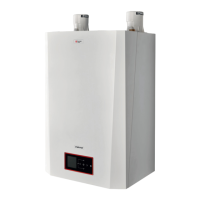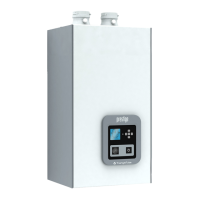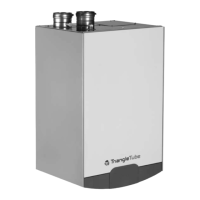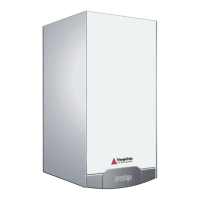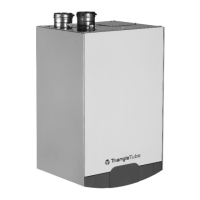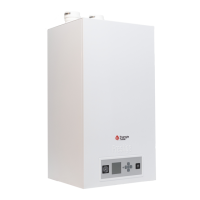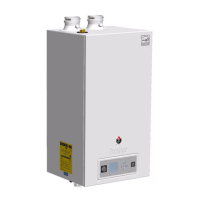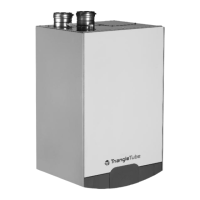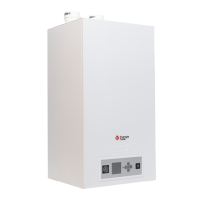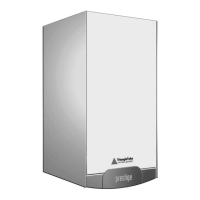15
CHAPTER 2
CHAPTER 2 - DIRECT VENT INSTALLATION OF VENT/AIR PIPING
2.2. Direct Vent - Horizontal - Sidewall
• The installation must conform to the re-
quirements of the authority having jurisdic-
tion or, in the absence of such requirements,
to the National Fuel Gas Code, ANSI Z223.1/
NFPA 54, and/or Natural Gas and Propane
Installation Code, CAN/CSA B149.1.
• For sidewall vented installations in the Com-
monwealth of Massachusetts, the installer
must comply with the additional require-
ments outlined in Chapter 5 on page 33.
A gas vent extending through a sidewall must
not terminate near an adjacent wall or below
any building extensions such as roof eaves,
balconies or decks. Failure to comply with the
required clearances in this manual can result in
substantial property damage, serious injury, or
death.
The information and diagrams outlining the
fittings and method of terminating the vent/
combustion air are directly related to PVC/
CPVC vent systems. When utilizing an AL29-
4C® or Polypropylene vent system, there may be
some variations. Consult the appropriate vent
manufacturer for recommendations and clari-
fications.
2.2.1 Determine Termination Location
Locate the vent and combustion air termination using
the following guidelines:
1. The total length of the vent or combustion air piping
must not exceed the limits given in Table 6 on page 7.
Do not include the 90º elbows used to terminate
the combustion air inlet and vent exterior of the
building when determining the total length of pipe.
NOTICE
WARNING
NOTICE
NOTICE
2. The combustion air piping must terminate using a
90º elbow directed away from the vent termination.
The termination must be located 12” [30.5 cm] mini-
mum above grade / highest anticipated snow level as
shown in Fig. 6 through Fig. 8 on page 17.
The combustion air termination can be placed
on either side of the vent termination. The vent
and combustion air terminations must be a
minimum 12” [30.5 cm] apart horizontally and
vertically. The vent and combustion air ter-
minations are not required to be in the same
pressure zone. The combustion air termination
must be directed away from the vent for Fig. 8
on page 17. The combustion air termination
must be directed down for Fig. 6 and Fig. 7 on
page 17.
3. The vent piping can terminate:
• Using a 90º elbow as shown in Fig. 6 or Fig. 8 on
page 17.
• Using a coupling as shown in Fig. 7 on page 17.
• The vent termination must be located 12” [30.5
cm] minimum above the combustion air termi-
nation.
4. The combustion air and vent pipe center lines must
be a minimum of 12” [30.5 cm] apart as shown in
Fig. 6 through Fig. 8 on page 17.
5. The following should be considered when determin-
ing the location of the vent and combustion air termi-
nations:
a. Locate the vent termination where ue vapors
will not damage surrounding shrubs, plants, air
conditioning equipment or be objectionable to
the homeowner.
b. The ue products will form a noticeable plume
of water vapor as they condense in colder air.
Avoid terminating the vent in areas where the
plume could obstruct window views.
c. Prevailing winds could cause freezing of ue gas
condensation and a buildup of water / ice on sur-
rounding plants, building surfaces or combustion
air inlet.
NOTICE
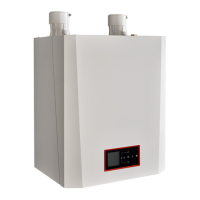
